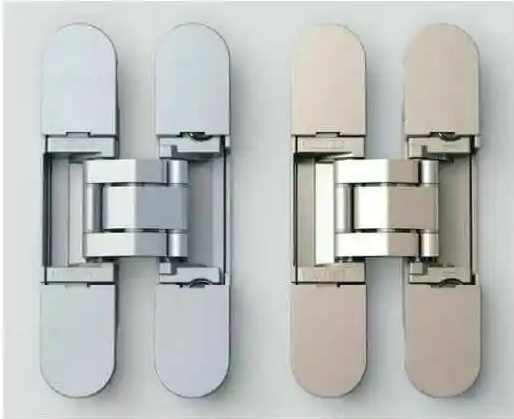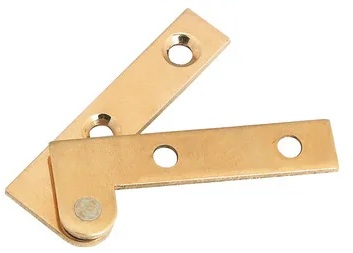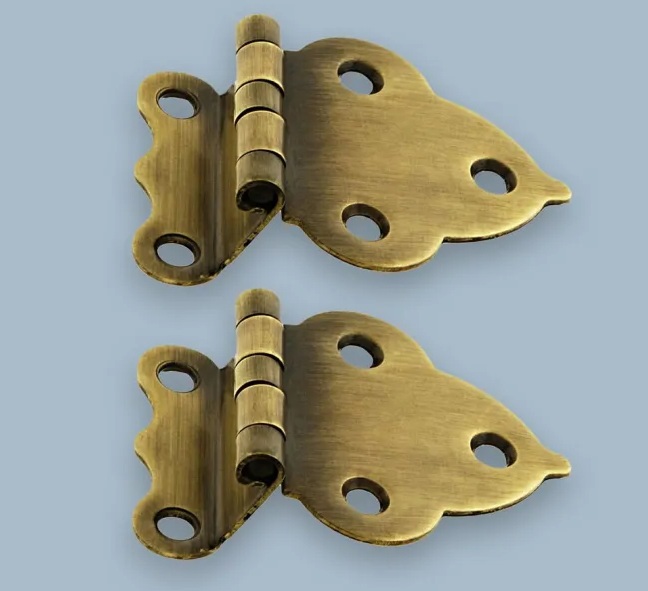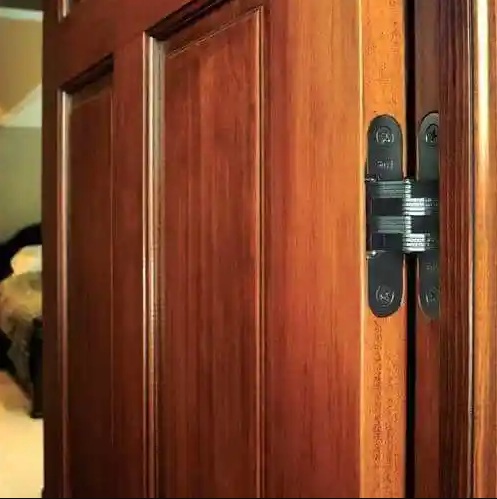Door hinges are the door accessory that is used to fix the door to its frame. By using door hinges the door can only rotate to its vertical axis. The door hinges work as a pivot point for door opening and closing in the house.
Various types of door hinges can be used to fix the door to its frame. The right type of door hinges can increase the aesthetics of your door.
Here are the types of door hinges.
- Ball-Bearing Hinge
- Barrel Hinge
- Butt Hinge
- Concealed Hinge
- Heavy Duty Hinge
- Knife Hinge
- Piano Hinge
- Pivot Hinge
- Offset Hinge
- Overlay Hinge
- Cylinder Hinge / Invisible Hinge
Table of Contents
1. Ball-Bearing Hinge
Ball-bearing hinges are door hinges with bearings hidden between the knuckles to reduce friction and allow the door to move more smoothly. These heavy-duty hinges are ideal for entry doors as they are durable and strong.

2. Barrel Hinge
The barrel hinge is used for special types of wood-related projects such as box cabinets or miniatures and is ideal for a variety of ideal projects.

3. Butt Hinge
However, the most common door hinge found on doors and cabinets is the butt hinge, which consists of two rectangular leaves with knuckles in the middle and connected by a pin. Available in four types: plain bearings, ball bearings (see above), spring-loaded and rising.

4. Concealed Hinge
Concealed Hinges are hidden. They are not visible from the outside. Its smooth, seamless appearance is aesthetically pleasing and safe as it cannot be altered from the outside.

5. Heavy Duty Hinge
These hinges are designed to provide stability and support for heavy doors (for example entry doors, doors, or furniture coverings such as boxes and benches) and frequently used doors. There are heavy-duty versions of ball bearing hinges, hidden hinges, and piano door hinges.

6. Knife Hinge:
Knife hinges are most often used in cabinets. A knife hinge is combined with a pivot hinge. These types of hinges look like scissors blades.

7. Piano Hinge
The continuous 2 m long piano hinges are especially suitable for bifold or concertina doors. It can also be utilized for hanging normal insets or lying on doors. A cylindrical hinge inserted into a hole drilled in the wood is not visible when the door is closed.

8. Pivot Hinge
Pivot hinges are attached to the top and bottom of the door so that it can be rotated from one point. This door hinge can handle doors that are heavier than others. Especially in homes and restaurants that use pivot doors to connect the kitchen and dining area, the pivot door can be opened easily with a single push.

9. Offset Hinge
Offset door hinges allow the door to move away from the door frame, making the opening up to 2 inches more.

10. Overlay Hinge
Some hinges can add thickness to the cabinet. To reduce the thickness, you should consider installing an overlay. This type of door hinge folds back and does not increase the thickness of the cabinet.

11. Cylinder Hinge / Invisible Hinge
These hinges allow the door to open 180 degrees, making it particularly suitable for double-leaf or bellows doors. It can also be used to hang a regular liner or place it over a door. A cylindrical door hinge inserted into a hole drilled in the wood is invisible when the door is closed.

